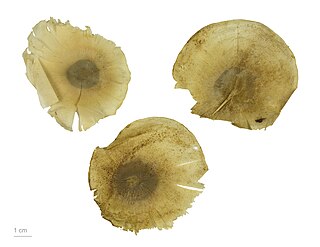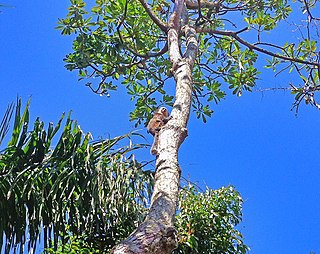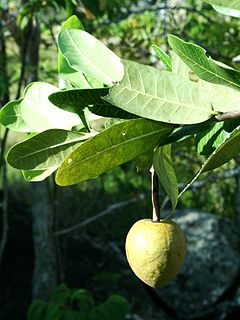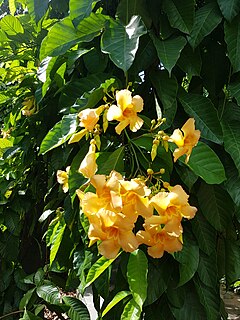| Neocouma | |
|---|---|
| Scientific classification | |
| Kingdom: | Plantae |
| (unranked): | Angiosperms |
| (unranked): | Eudicots |
| (unranked): | Asterids |
| Order: | Gentianales |
| Family: | Apocynaceae |
| Subfamily: | Apocynoideae |
| Tribe: | Apocyneae |
| Genus: | Neocouma Pierre |
Neocouma is a genus of plant in the Apocynaceae family first described as a genus in 1898. It is native to northern South America. [1]

Apocynaceae is a family of flowering plants that includes trees, shrubs, herbs, stem succulents, and vines, commonly known as the dogbane family,. Members of the family are native to the European, Asian, African, Australian, and American tropics or subtropics, with some temperate members. The former family Asclepiadaceae is considered a subfamily of Apocynaceae and contains 348 genera. A list of Apocynaceae genera may be found here.

South America is a continent in the Western Hemisphere, mostly in the Southern Hemisphere, with a relatively small portion in the Northern Hemisphere. It may also be considered a subcontinent of the Americas, which is how it is viewed in the Spanish and Portuguese-speaking regions of the Americas. The reference to South America instead of other regions has increased in the last decades due to changing geopolitical dynamics.
- Species [1]
- Neocouma parviflora (Markgr.) Zarucchi - S Venezuela, N Brazil
- Neocouma ternstroemiacea (Müll.Arg.) Pierre - Venezuela, N Brazil, Colombia, Peru
- formerly included [1]
Neocouma duckeiMarkgr. = Mucoa duckei (Markgr.) Zarucchi





